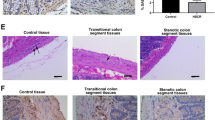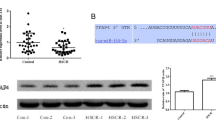Abstract
Endogenous peptides, bioactive agents with a small molecular weight and outstanding absorbability, regulate various cellular processes and diseases. However, their role in the occurrence of Hirschsprung’s disease (HSCR) remains unclear. Here, we found that the expression of an endogenous peptide derived from YBX1 (termed PDYBX1 in this study) was upregulated in the aganglionic colonic tissue of HSCR patients, whereas its precursor protein YBX1 was downregulated. As shown by Transwell and cytoskeleton staining assays, silencing YBX1 inhibited the migration of enteric neural cells, and this effect was partially reversed after treatment with PDYBX1. Moreover, immunoprecipitation and immunofluorescence revealed that ERK2 bound to YBX1 and PDYBX1. Downregulation of YBX1 blocked the ERK1/2 pathway, but upregulation of PDYBX1 counteracted this effect by binding to ERK2, thereby promoting cell migration and proliferation. Taken together, the endogenous peptide PDYBX1 may partially alleviate the inhibition of the ERK1/2 pathway caused by the downregulation of its precursor protein YBX1 to antagonize the impairment of enteric neural cells. PDYBX1 may be exploited to design a novel potential therapeutic agent for HSCR.







Similar content being viewed by others
References
Lake JI, Heuckeroth RO. Enteric nervous system development: Migration, differentiation, and disease. Am J Physiol Gastrointest Liver Physiol 2013, 305: G1–G24.
Bahrami A, Joodi M, Moetamani-Ahmadi M, Maftouh M, Hassanian SM, Ferns GA. Genetic background of Hirschsprung disease: A bridge between basic science and clinical application. J Cell Biochem 2018, 119: 28–33.
Jaroy EG, Acosta-Jimenez L, Hotta R, Goldstein AM, Emblem R, Klungland A, et al. “Too much guts and not enough brains”: (epi)genetic mechanisms and future therapies of Hirschsprung disease - a review. Clin Epigenetics 2019, 11: 135.
Ambartsumyan L, Smith C, Kapur RP. Diagnosis of Hirschsprung disease. Pediatr Dev Pathol 2020, 23: 8–22.
Hei Ha JL, Hang Lui VC, Hang Tam PK. Embryology and anatomy of Hirschsprung disease. Semin Pediatr Surg 2022, 31: 151227.
Gosain A, Frykman PK, Cowles RA, Horton J, Levitt M, Rothstein DH, et al. Guidelines for the diagnosis and management of Hirschsprung-associated enterocolitis. Pediatr Surg Int 2017, 33: 517–521.
Pan W, Goldstein AM, Hotta R. Opportunities for novel diagnostic and cell-based therapies for Hirschsprung disease. J Pediatr Surg 2022, 57: 61–68.
Karim A, Tang CS, Tam PK. The emerging genetic landscape of Hirschsprung disease and its potential clinical applications. Front Pediatr 2021, 9: 638093.
Vollesen ALH, Amin FM, Ashina M. Targeted pituitary adenylate cyclase-activating peptide therapies for migraine. Neurotherapeutics 2018, 15: 371–376.
Gozes I, Sragovich S, Schirer Y, Idan-Feldman A. D-SAL and NAP: Two peptides sharing a SIP domain. J Mol Neurosci 2016, 59: 220–231.
Skorput AGJ, Zhang X, Waataja JJ, Peterson CD, Riedl MS, Kitto KF, et al. Involvement of the VGF-derived peptide TLQP-62 in nerve injury-induced hypersensitivity and spinal neuroplasticity. Pain 2018, 159: 1802–1813.
Klein R, Mahlberg N, Ohren M, Ladwig A, Neumaier B, Graf R, et al. The neural cell adhesion molecule-derived (NCAM)-peptide FG loop (FGL) mobilizes endogenous neural stem cells and promotes endogenous regenerative capacity after stroke. J Neuroimmune Pharmacol 2016, 11: 708–720.
Nishida T, Inui M, Nomizu M. Peptide therapies for ocular surface disturbances based on fibronectin-integrin interactions. Prog Retin Eye Res 2015, 47: 38–63.
Chowdhury M, Enenkel C. Intracellular dynamics of the ubiquitin-proteasome-system. F1000Res 2015, 4: 367.
Wang Y, Su J, Fu D, Wang Y, Chen Y, Chen R, et al. The role of YB1 in renal cell carcinoma cell adhesion. Int J Med Sci 2018, 15: 1304–1311.
Evdokimova V. Y-box binding protein 1: Looking back to the future. Biochemistry (Mosc) 2022, 87: S5–S145.
Martin M, Hua L, Wang B, Wei H, Prabhu L, Hartley AV, et al. Novel serine 176 phosphorylation of YBX1 activates NF-κB in colon cancer. J Biol Chem 2017, 292: 3433–3444.
Evans MK, Matsui Y, Xu B, Willis C, Loome J, Milburn L, et al. Author Correction: Ybx1 fine-tunes PRC2 activities to control embryonic brain development. Nat Commun 2023, 14: 412.
Gupta MK, Polisetty RV, Sharma R, Ganesh RA, Gowda H, Purohit AK, et al. Altered transcriptional regulatory proteins in glioblastoma and YBX1 as a potential regulator of tumor invasion. Sci Rep 2019, 9: 10986.
Chu PC, Lin PC, Wu HY, Lin KT, Wu C, Bekaii-Saab T, et al. Mutant KRAS promotes liver metastasis of colorectal cancer, in part, by upregulating the MEK-Sp1-DNMT1-miR-137-YB-1-IGF-IR signaling pathway. Oncogene 2018, 37: 3440–3455.
Zhang E, He X, Zhang C, Su J, Lu X, Si X, et al. A novel long noncoding RNA HOXC-AS3 mediates tumorigenesis of gastric cancer by binding to YBX1. Genome Biol 2018, 19: 154.
Taylor L, Kerr ID, Coyle B. Y-box binding protein-1: A neglected target in pediatric brain tumors? Mol Cancer Res 2021, 19: 375–387.
Livak KJ, Schmittgen TD. Analysis of relative gene expression data using real-time quantitative PCR and the 2 (-Delta Delta C(T)) Method. Methods 2001, 25: 402–408.
Yuan Q, Ren Q, Li L, Tan H, Lu M, Tian Y, et al. A Klotho-derived peptide protects against kidney fibrosis by targeting TGF-beta signaling. Nat Commun 2022, 13: 438.
Li Y, Lv X, Chen H, Zhi Z, Wei Z, Wang B, et al. Peptide derived from AHNAK inhibits cell migration and proliferation in Hirschsprung’s disease by targeting the ERK1/2 pathway. J Proteome Res 2021, 20: 2308–2318.
To K, Fotovati A, Reipas KM, Law JH, Hu K, Wang J, et al. Y-box binding protein-1 induces the expression of CD44 and CD49f leading to enhanced self-renewal, mammosphere growth, and drug resistance. Cancer Res 2010, 70: 2840–2851.
Chang YW, Mai RT, Fang WH, Lin CC, Chiu CC, Wu Lee YH. YB-1 disrupts mismatch repair complex formation, interferes with MutSα recruitment on mismatch and inhibits mismatch repair through interacting with PCNA. Oncogene 2014, 33: 5065–5077.
Imada K, Shiota M, Kohashi K, Kuroiwa K, Song Y, Sugimoto M, et al. Mutual regulation between Raf/MEK/ERK signaling and Y-box-binding protein-1 promotes prostate cancer progression. Clin Cancer Res 2013, 19: 4638–4650.
Wolffe AP. Structural and functional properties of the evolutionarily ancient Y-box family of nucleic acid binding proteins. Bioessays 1994, 16: 245–251.
Luzón-Toro B, Villalba-Benito L, Torroglosa A, Fernández RM, Antiñolo G, Borrego S. What is new about the genetic background of Hirschsprung disease? Clin Genet 2020, 97: 114–124.
Feng M, Xie X, Han G, Zhang T, Li Y, Li Y, et al. YBX1 is required for maintaining myeloid leukemia cell survival by regulating BCL2 stability in an m6A-dependent manner. Blood 2021, 138: 71–85.
Xu J, Ji L, Liang Y, Wan Z, Zheng W, Song X, et al. CircRNA-SORE mediates sorafenib resistance in hepatocellular carcinoma by stabilizing YBX1. Signal Transduct Target Ther 2020, 5: 298.
Wang Y, Su J, Wang Y, Fu D, Ideozu JE, Geng H, et al. The interaction of YBX1 with G3BP1 promotes renal cell carcinoma cell metastasis via YBX1/G3BP1-SPP1- NF-κB signaling axis. J Exp Clin Cancer Res 2019, 38: 386.
Frémin C, Saba-El-Leil MK, Lévesque K, Ang SL, Meloche S. Functional redundancy of ERK1 and ERK2 MAP kinases during development. Cell Rep 2015, 12: 913–921.
Boulton TG, Nye SH, Robbins DJ, Ip NY, Radziejewska E, Morgenbesser SD, et al. ERKs: A family of protein-serine/threonine kinases that are activated and tyrosine phosphorylated in response to insulin and NGF. Cell 1991, 65: 663–675.
Newbern J, Zhong J, Wickramasinghe RS, Li X, Wu Y, Samuels I, et al. Mouse and human phenotypes indicate a critical conserved role for ERK2 signaling in neural crest development. Proc Natl Acad Sci U S A 2008, 105: 17115–17120.
Acknowledgements
This work was supported by the National Natural Science Foundation of China (82001590, 81801496, and 82270540).
Author information
Authors and Affiliations
Corresponding authors
Ethics declarations
Conflict of interest
All authors claim that there are no conflict of interest.
Supplementary Information
Below is the link to the electronic supplementary material.
Rights and permissions
Springer Nature or its licensor (e.g. a society or other partner) holds exclusive rights to this article under a publishing agreement with the author(s) or other rightsholder(s); author self-archiving of the accepted manuscript version of this article is solely governed by the terms of such publishing agreement and applicable law.
About this article
Cite this article
Sun, Q., Zhi, Z., Wang, C. et al. Mechanism of Endogenous Peptide PDYBX1 and Precursor Protein YBX1 in Hirschsprung’s Disease. Neurosci. Bull. (2023). https://doi.org/10.1007/s12264-023-01132-8
Received:
Accepted:
Published:
DOI: https://doi.org/10.1007/s12264-023-01132-8




